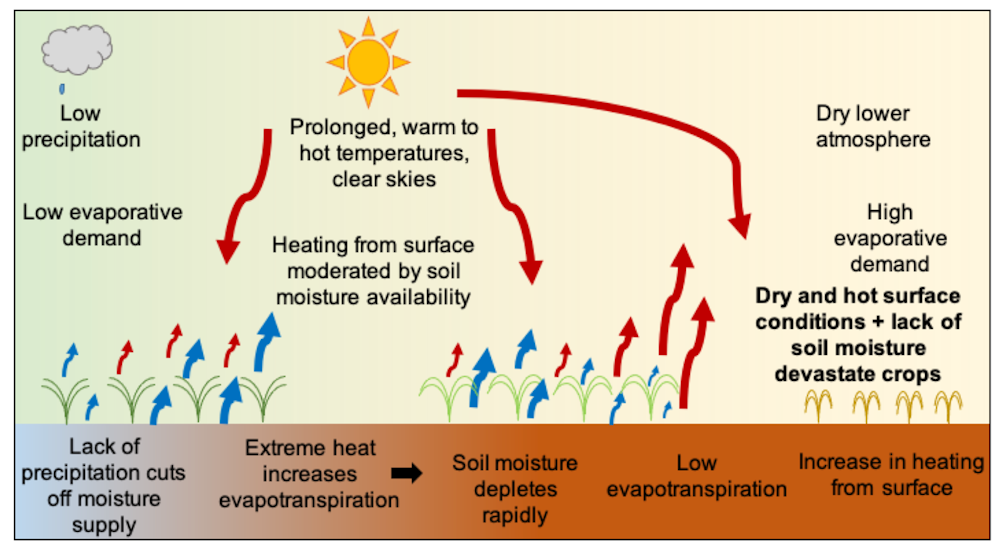Flash Droughts To Increase As Climate Becomes Warmer, A Study Reveals
Flash droughts are expected to increase as the world becomes warmer. This will put farmers and the production of food at a high risk.

Flash droughts, which are defined as a rapid onset or intensification of drought, can affect the agriculture of the regions and can even have a deeper impact on the ecology.

New research shows that such droughts are expected to increase because of climate change.
What Does The Research Say About Flash Droughts?
A postdoctoral researcher, Jordan Christian, who is the leader of the study, said that global projections of flash droughts might make the climate warmer.
He said that through the study, possible changes in flash droughts frequency and cropland risk from flash droughts are quantified with the help of global climate model simulations.

So, the conclusion came that flash droughts are expected to increase worldwide, but the sharpest increase will be seen in cases with higher fossil fuel usage and higher radiative forcing.
Christian’s study co-author and faculty advisor is Jeffrey Basara, an associate professor in the schools of civil engineering and environmental sciences in the Gallogly College of Engineering, and Meteorology in the College of Atmospheric and Geographic Sciences.
He said that the study continuously stresses the fact that as the drought expands rapidly, agricultural producers – domestic and overseas – will face an increase in water availability challenges. This will give rise to crop losses, and socioeconomic pressures related to food production.
Reason For Flash Droughts
Based on a study that has recently been published in Nature Communications, there will likely be more flash droughts worldwide.
The University of Oklahoma has forecasted scenarios that more usage of fossil fuels and radiative forcing will be the main reason.
Here, fossil fuels are natural fuels such as oil or coal that were formed millions and millions of years ago from dead plants and animals in the ground.

Radiative forcing happens when the level of energy entering the Earth and the amount leaving the Earth is different. Our planet receives energy from the sun in the form of solar radiation, which it eventually loses as heat in the form of infrared energy. The atmosphere will warm up when there is more radiation reaching the Earth than is being released, as has been the case lately.
Moreover, radiative forcing and the planet’s average temperature were approximately in balance before the advent of the industrial era. But the most significant change to this was the addition of greenhouse gases by humans to the atmosphere, which keeps heat from leaving the planet.
Another reason for flash droughts is deforestation or cutting down trees. This is because when we cut down forests, the Earth’s surface is exposed to more sunlight. Moreover, as per theory, the Earth absorbs more solar energy if its surface is darker than a forest. However, more sunlight is reflected into space in regions with lighter climates, such as the Arctic.
Impact Of Flash Droughts
According to the new article, it is believed that farmers around the world will face increased tension because of the question of water availability. At the same time, such disruptions can impact the food production process and can also lead to higher prices and social unrest.
At the same time, flash droughts have the potential to cause immense economic damage. To completely understand the effects of flash drought on all economic sectors and the environment, more research is required.

As recently as the beginning of 2019, there was a severe drought in the Southeast of the US. In the summer of 2012, the central Great Plains suffered a widespread flash drought that caused more than $30 billion in damages.
In one study, 5 to 10% of flash droughts advanced to the highest drought category specified by the US Drought Monitor, even though the majority are unlikely to become persistent droughts: D4 or Exceptional Drought.
Proofread & Published by Naveenika Chauhan




